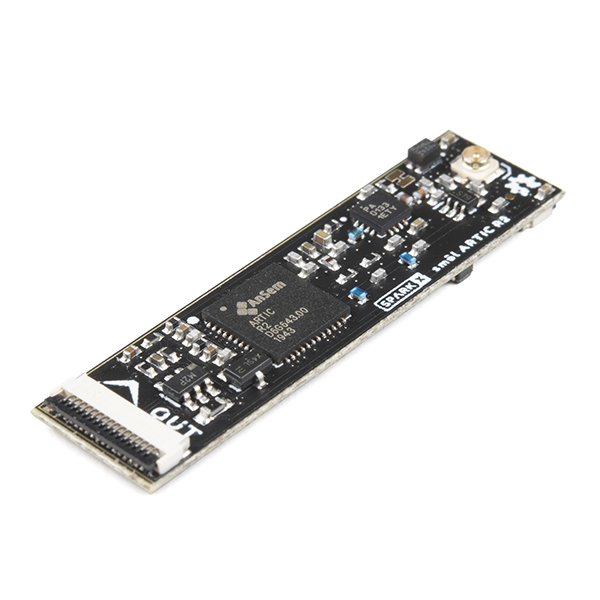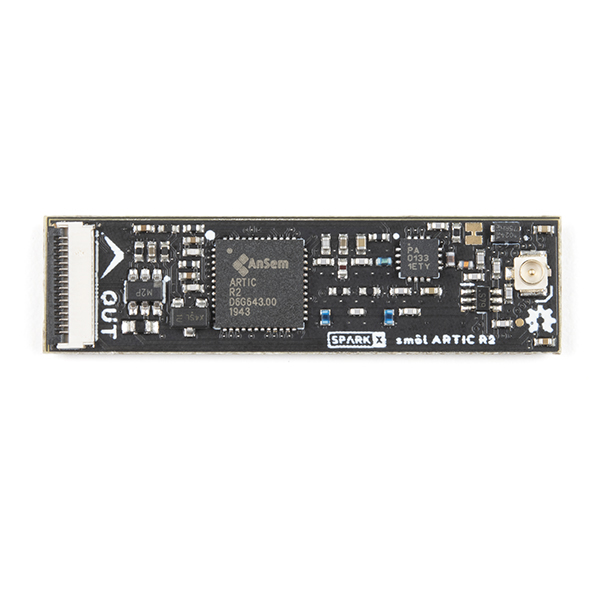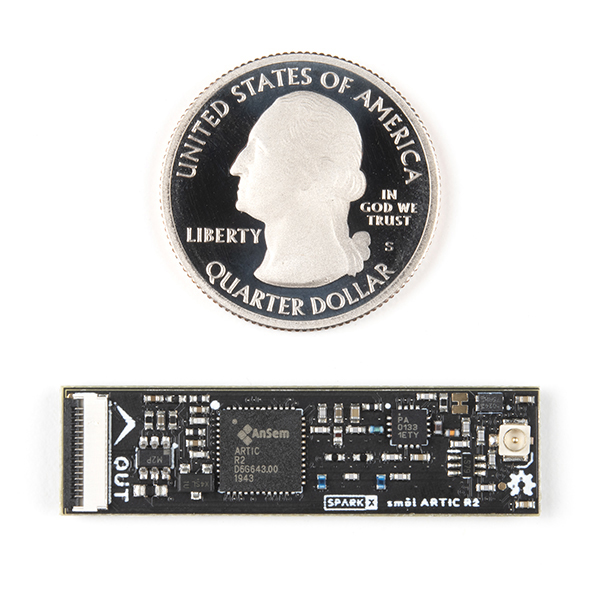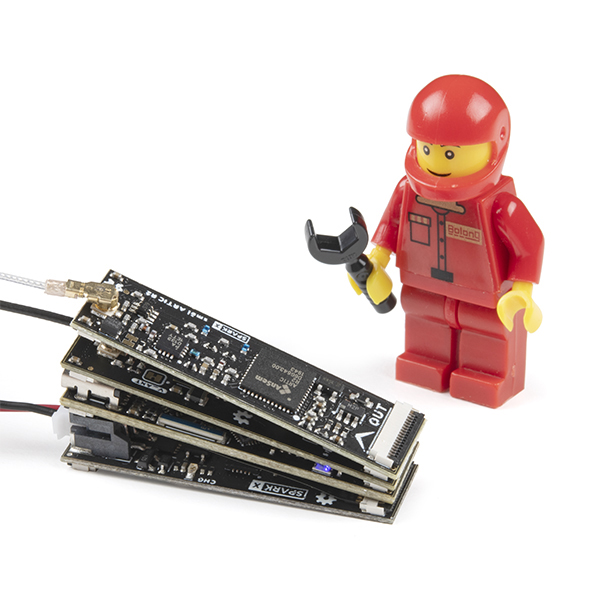Our RedBoards are great. But don't they sometimes seem a little BIG?!
Enter smôl, a new range of boards which are both small in size and small on current draw. It's a smôl world!
Is your project linked to environmental protection, awareness or study, or to protecting human life? Perhaps you are developing a wildlife tracker, ocean buoy, environmental monitoring system or need to transfer emergency medical information? Do you need to be able to transmit and receive data anywhere? If so, this is the smôl product for you! Our smôl ARTIC R2 allows you to send and receive short bursts of data via the ARGOS satellite network, anywhere on Earth including the Polar regions.
The ARGOS system has been around for quite a while. It was created in 1978 by the French Space Agency (CNES), the National Aeronautics and Space Administration (NASA) and the National Oceanic and Atmospheric Administration (NOAA), originally as a scientific tool for collecting and relaying meteorological and oceanographic data around the world. Today, ARGOS is revolutionising satellite communication, adding a constellation of 25 nanosatellites to complement the 7 traditional satellites carrying ARGOS instrumentation. The first of these, ANGELS, is already in operation and SparkFun were among the first users to transmit data to ANGELS in October 2020. When the constellation is complete, there will be a maximum of 10-15 minutes between satellite passes.
The smôl ARTIC R2 has been tested and certified by Kinéis. Compared to other satellite communication systems, the smôl ARTIC R2 has a much lower current draw and will work with a very simple, very lightweight quarter-wave wire antenna. The ARTIC R2 chipset on our board operates from 3.3V and the on-board flash memory enables fast boot times. If you don’t need the full transmit power, or want to conserve your battery life, you can transmit at reduced power too thanks to opto-isolated gain control.
Our Arduino Library makes it really easy to get up and running with ARGOS. We’ve provided a full set of examples which will let you: configure the ARTIC R2 chipset; predict the next satellite pass; receive allcast and individually-coded messages; transmit messages using ARGOS 2, 3 and 4 encoding. There are dedicated examples for the smôl ARTIC R2.
Incorrect Platform ID: We learned recently that some ARTIC R2 boards had been incorrectly programmed with the wrong Platform ID. Each board has two IDs: a decimal one which you use to access your data on ArgosWeb; and a hexadecimal one which is embedded in each satellite uplink message. These boards had been incorrectly programmed with the decimal ID instead of the hexadecimal one. You can tell if your board is affected by calling readPlatformID(). If the true hexadecimal ID is returned, all is well. If the value is the decimal ID - expressed in hexadecimal - then your board requires reprogramming as your messages will not be delivered. Please return your board. We will reprogram it and return it to you quickly. If your project is time-critical, please contact us via the SparkX forum and we will provide a software work-around. We apologise for the error and the inconvenience.
smôl is an ecosystem of miniature processor boards, peripheral boards, power boards and accessories. Designed to be both physically small and to have the smallest possible current draw, smôl is the perfect choice for applications like wildlife tracking or discrete long-term monitoring. smôl boards are designed to stack one on top of the other, using 16-way 0.5mm-pitch Flexible Printed Circuits (FPCs) to provide the interconnect from one board to the next. Looking for a really compact solution for your next project? This is it!
We will be adding new smôl boards over the coming months. Don't see the board you need for your application? Reach out to us via the SparkX Forum and tell us which board(s) we should add next!
The ARGOS satellite system is currently restricted to specific programs and applications. Please check that your project meets these requirements before buying hardware. CLS (France) and the Woods Hole Group (America) will be able to advise if your project meets the requirements. "To meet system use requirements, all programs using Argos have to be related in some way or other to environmental protection, awareness or study, or to protecting human life." Please see our ARGOS ARTIC R2 Communication Guide for more details.
Thanks! The ARTIC R2 circuit is a remix of the reference design kindly provided by the Arribada Initiative and Icoteq Ltd.
Experimental Product: SparkX products are rapidly produced to bring you the most cutting edge technology as it becomes available. These products are tested but come with no guarantees. Live technical support is not available for SparkX products. Head on over to our forum for support or to ask a question.
- ARTIC-R2 Chipset
- Serial interface (SPI) for communication with MCU
- Programmable DSP core on board to ensure flexibility
- RX frequency : 466MHz
- TX frequency: 400MHz
- Fractional N frequency synthesis
- Supported TX standards:
- BPSK: PTT-A2 (ARGOS 2), PTT-VLD (ARGOS 4)
- QPSK: PTT-A3, PTT-ZE (ARGOS 3)
- GMSK: PTT-HD (ARGOS 3), PTT-MD (ARGOS 4), PTT-HD (ARGOS 4)
- Supported RX standards:
- BPSK: PMT-A3 (ARGOS 3)
- DSSS OQPSK: PMT-A4 (ARGOS 4) not available
- Supports COSPAS-SARSAT standard
- RFPA0133 Power Amplifier
- Boosts the 0dBm (1mW) output from the ARTIC by up to 26dB
- Typical maximum transmit power level: 400mW
- Programmable gain
- TCXO
- 26MHz temperature-compensated crystal oscillator for maximum stability
- SST25VF020B Flash memory
- Stores the ARTIC firmware, allowing fast boot times
- Power requirements:
- 3.3V
- Typical current draw:
- Idle: 7.2mA
- Receive: 32.8mA
- Transmit (full gain): 220mA
- Transmit (reduced gain): 170mA
smôl Specifics:
- Interfaces: SPI and I2C
- SPI Chip Select: CS0 (via waterfalling)
- PCA9536 GPIO Expander I2C Address: 0x41
- GPIO:
- Uses GPIO0 for power control (via waterfalling)
- Leave GPIO0 floating or pull low to disable power
- Pull GPIO0 high to enable power
- Power is controlled automatically via the Arduino Library
Properties:
- Length: 1.60" (40.6mm)
- Width: 0.42" (10.7mm)
- Height: 0.18" (4.5mm) max. including u.FL connection
- Weight: 1.5g (0.05oz)
- PCB thickness: 0.8mm
smôl ARTIC R2 Documentation:
- Schematic
- Eagle Files
- Hookup Guide
- ARGOS Chipset Info Sheet
- ARTIC R2 User Datasheet v1.1
- GitHub Hardware Repo
- Arduino Examples
- SparkFun ARGOS ARTIC R2 Arduino Library
- Test certificates:
- ARGOS 4 VLD Certificate (smôl ARTIC R2)
- ARGOS 2 Certificate (ARGOS ARTIC R2 Satellite Transceiver Shield)
- ARGOS 3 Certificate (ARGOS ARTIC R2 Satellite Transceiver Shield)
smôl Documentation:
smôl ARTIC R2 Product Help and Resources
ARGOS (ARTIC R2) Satellite Communication Guide
November 18, 2021
A guide describing the ARGOS satellite network - as used by our ARTIC R2 satellite communication products
smôl ARTIC R2 Hookup Guide
October 21, 2021
Small in size, small on current draw. It's a smôl world! This guide will get you up and running with the smôl ARTIC R2 satellite communication Peripheral Board.
smôl Hookup Guide
October 19, 2021
Small in size, small on current draw. It's a smôl world! This guide will get you up and running with the smôl ecosystem.
Core Skill: DIY
Whether it's for assembling a kit, hacking an enclosure, or creating your own parts; the DIY skill is all about knowing how to use tools and the techniques associated with them.
Skill Level: Competent - You might need to break out the power tools. Nothing beyond a power drill or rotary tool should be required, but you might have a hard time with just a screwdriver and hammer. Cutting holes into plastic or metal might be required.
See all skill levels
Core Skill: Electrical Prototyping
If it requires power, you need to know how much, what all the pins do, and how to hook it up. You may need to reference datasheets, schematics, and know the ins and outs of electronics.
Skill Level: Competent - You will be required to reference a datasheet or schematic to know how to use a component. Your knowledge of a datasheet will only require basic features like power requirements, pinouts, or communications type. Also, you may need a power supply that?s greater than 12V or more than 1A worth of current.
See all skill levels
Comments
Looking for answers to technical questions?
We welcome your comments and suggestions below. However, if you are looking for solutions to technical questions please see our Technical Assistance page.
Customer Reviews
No reviews yet.






